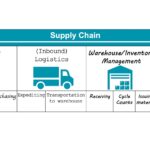Language matters. Early in my supply chain career, my supply chain leader sat across his desk from me and told me, “Vendors sell hot dogs. Suppliers are partners.” I think I was implementing a supplier scorecard program at the time and was constantly referring to our suppliers as vendors.
Since that moment, every time someone refers to suppliers as vendors, I cringe a little. Just as supply chain, procurement, and purchasing are different, so are vendors and suppliers. Today’s article talks about characteristics that tell you whether your organization has “vendors” or “suppliers”.
Technology
When a vendor has a new product or new technology, they don’t typically bring it to their customers or spend time thinking about how their customers might use it. In contrast, suppliers are constantly thinking about how their existing technology might be used in their customers’ products, and also bring newly introduced products with application ideas. I had a plastics supplier once who would periodically call me and tell me about a newly developed polymer that was more abrasion-resistant or withstood more compressive force. She would ask me to look at the application for a specific part on a machine and see if that part would benefit from the features of that new product. She was an excellent supplier partner who was constantly looking to build value and reduce total cost.
Costs
A business will constantly pressure a vendor to lower costs, for no reason other than the business needs to purchase the product less expensively. In a pure commodity market with many possible suppliers, this model can work. But the minute a market has few competitors or proprietary technology, this model breaks down. Similar to the note above about technology, a supplier will seek to find efficiencies that lower costs for both parties. They may even engage their customers in Kaizen or Lean activities designed to lower costs and have a structure (such as a 50/50 agreement) to share the benefits of their increase efficiency with their customers.
Terms
While this may seem counterintuitive, a vendor accepts their customers’ standard terms and conditions, while a supplier negotiates those terms in good faith. While it may seem easier to the procurement and legal teams when vendors simply sign the terms without modifying them, it also indicates a lack of engagement in the relationship. All standard terms templates have objectionable clauses, or clauses not well suited to the product sold. Reasonable edits to terms and conditions are an indication of a true supplier partner instead of just a vendor.
Planning
A supplier wants to be part of their customers’ planning sessions. This may mean project planning, demand planning, or other stages of the planning cycle. While their customer does have to invite them into these conversations, a supplier partner will bring real value to those planning sessions and offer insights into their slower seasons, fiscal year cycle, upstream supply chain lead times, and other factors that affect timing. A vendor will be disengaged from the planning cycle, uninterested, and simply providing lead times as a black box with no negotiation or flexibility.
Relationships
Vendors certainly still have relationships with their customers. They may even have really good ones. But those relationships will be with the engineers and operations teams, not with procurement and supply chain. Sales teams and account executives often find relationships with procurement difficult, as their roles are flip sides of the same commerce coin. I have seen many vendors who would essentially “sneak” onto our company campus to talk through their latest technology or options with the engineering team, hoping that team would design their solution into the product and eliminate their competition. Their procurement representative or category manager would have no idea they were even in town, and would only find out later that the vendor took the whole engineering team to dinner. While this can be effective short-term for the vendor, a good procurement team immediately starts looking for an alternate supplier. If that vendor had behaved like a supplier and instead kept procurement in the loop, they could have worked together and potentially found more applications for their technology in other company products. While seemingly irrelevant at first glance, the differences between a vendor and a supplier are profound. Vendors are focused on short-term, just-get-it-done methods. Suppliers are interested in long term value and building a true relationship with their customers. That being said, the best suppliers in the world become vendors when treated that way. Any procurement team can turn a supplier into a vendor, and a great procurement team can turn a vendor into a supplier. Which direction is your team going? To discuss your vendors vs. your suppliers, schedule some time on my calendar.




